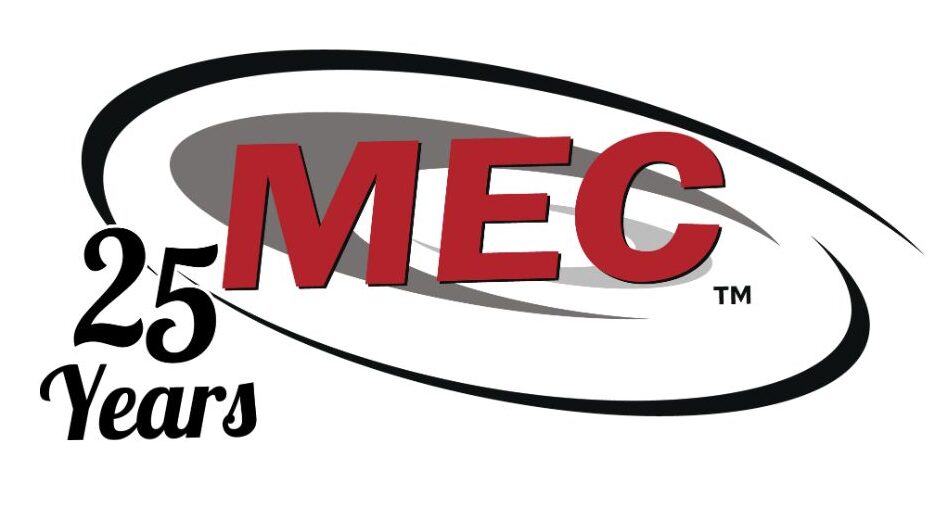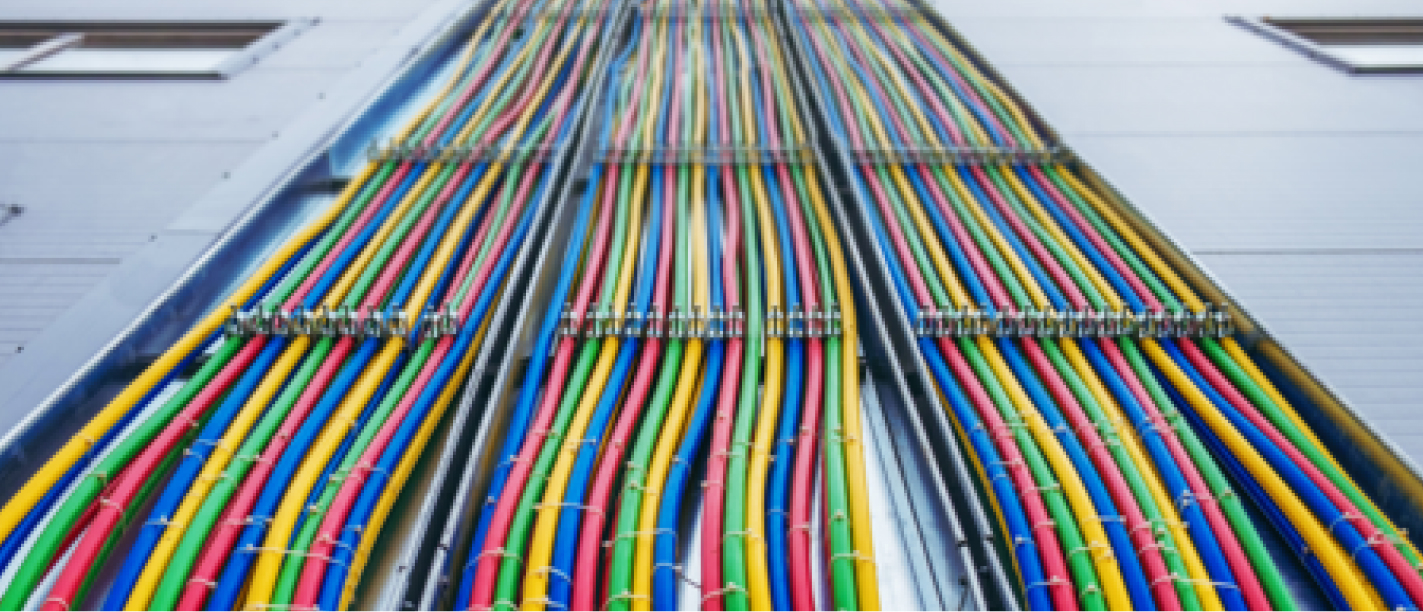Why Structured Cabling is the Future of Industrial Networks
Structured cabling technology is rapidly becoming a critical aspect of industrial networks. In 2016, the worldwide structured cabling market was worth $7.7 billion and is expected to expand by 7.6% through 2025.
Why is this infrastructure so popular? It’s efficient and more reliable than the point-to-point cabling methods of the past. Point-to-point cabling is fine when you only have one or two cables, but as a network grows – and they grow fast – the addition of more cables creates problems.
Structured cabling doesn’t strain your IT resources like point-to-point cabling. However, it’s important to have qualified data cabling contractors install your infrastructure. Installing network cables isn’t a DIY job; you need data wiring contractors from a reputable network cable installation company.
Structured Cabling Solutions
Why MEC Structured Cabling
At MEC, our team of professionals can install a structured cable network that will support your business needs. After using our design build services, our customers report meeting deadlines faster and saving money on their projects.
Don’t risk the fines of performing non-compliant DIY work. Choose an experienced professional to install your data and voice cabling. We proudly provide structured cabling solutions to clients in the New England area including Massachusetts, New Hampshire, Vermont and Maine.
Our manufacturer-certified field installers’ work is warrantied for 25 years. By hand-choosing the best —from the initial coordination meetings to the project closeout —we’ve built a reputation for complete installations that exceed industry standards.
Our structured cabling installations include but are not limited to:
- Cabling design and installation
- Cat6, Category 6 Augmented copper cabling
- Inside plant and outside plant fiber optic installation
- Data network cabling
- VoIP cabling
- High pair count backbone copper cabling
- Cable tray, rack installs, and data center and network room renovations
- Termination and testing of all systems with documented test results
- Service calls for moves, adds and changes
- As-built and installation documentation
Structured Cabling for Stronger Voice and Data Networks
Are you struggling with low-quality voice calls and slow data transfer rates that don’t quite meet the speed and quality promised by your provider? If so, your network provider might not be at fault. In fact, the problem is likely your telecommunication infrastructure.
To get clear and fast communications through audiovisual systems and data transfers, you need high-tech structured cabling infrastructure. A structured cabling system allows for faster speeds, which will help you make decisions faster and ultimately increase profitability.
If you need structured wiring in Boston, MA or surrounding areas, we want to help. Our team of structured cabling installers are certified, and we provide a 25-year warranty on our work. Our installations are compliant with current electrical standards and we take safety seriously.
Security
As a licensed security company, we offer the latest in protection management solutions and added peace of mind. Through ongoing training, our staff keeps current with industry standards, offering an unparalleled level of customer service.
- IP camera systems
- CCTV camera systems
- Intrusion detection systems
- Biometric time clocks
- Biometric door readers
- Gate controls
- Intercom systems
- OSHA-compliant paging systems
What is Structured Cabling?
A structured cabling installation involves the following elements:
- Vertical (Backbone) cabling. Vertical cabling connects the various telecommunication rooms using high pair count copper or multimode or single mode fiber.
- Horizontal cabling. Horizontal cabling connects outlets in a work area with the telecommunications closet. This cabling is run either above the ceiling or below the floor. These cables also must be no longer than 90 meters. An extra 6 meters can be added with patch cables, but patch cables are limited to 10 meters.
- Work Area. The work area is basically any space that contains end-user telecommunications devices. For example, the work area includes telephones, laptops, desktop computers, and copy machines.
- A telecommunications closet. This is an enclosed area that contains equipment, cable terminations, cross-connects, and distribution frames. A telecommunications closet can be an entire room or a simple cabinet, depending on network size.
- An equipment room. An equipment room contains complex equipment like servers and network switches along with mechanical terminations. Setting up an equipment room is not for the faint of heart. Data cable contractors spend countless hours training hands-on to gain the skills needed to set up an equipment room to high organizational standards.
- An entrance facility. This space houses equipment that connects to the network cabling from an outside service provider (AT&T, Comcast, Verizon).
- High-speed Ethernet cables. The Ethernet cables commonly used in a structured cabling system are fast CAT6, CAT6E and CAT6A cables. These cables are capable of the highest transfer speeds, but CAT6 cables are about ten times faster than CAT5 and create less ‘crosstalk.’
- Documentation. Professional structured cabling contractors will properly document and label faceplates and patch panels according to 606-B industry standards. These standards require that all cables be labeled at both ends with machine-generated text that isn’t easily scratched or rubbed off. The 606-B standards also require a documented cable and component system that gets updated whenever there is a change. Documenting the entire installation helps rebuild or repair a configuration damaged by elements like fire or water.
The Benefits of Structured Cabling
Faster data transfer speeds
Who doesn’t want more speed? When you have a structured cabling system infrastructure, you don’t need to worry about speed. You won’t have to wonder if you’ll waste ten minutes fixing the quality of your next video conference call before getting down to business.
As a standard, structured cabling infrastructure utilizes CAT6, CAT6E and CAT6A Ethernet cables to maximize data transfer speed.
Future ease involving upgrades and troubleshooting
With a structured cabling system in place, network upgrades and troubleshooting will be much easier. You won’t be prevented from growing your business because of outdated IT infrastructure. When you grow your network, performance will increase rather than be disrupted.
Have you ever called in a network specialist to help you with a problem, only to watch them spend an hour reorganizing your cables before they can start troubleshooting? That scenario will be avoided with structured cable infrastructure.
Network upgrades will be easier as well. For example, if you choose to upgrade existing network components or switch vendors, a structured cabling system will support a smooth transition.
Whether you have an in-house IT team or an external IT services provider, they’ll appreciate the simplicity and ease of your setup.
Less downtime
How many employees are using devices connected to your network at the same time? Can your network handle the load, or does your network go down frequently? What do your employees do when the network goes down? You probably still pay them even though they can’t get their work done.
Downtime is costly. For 25% of businesses, one hour of downtime can cost as much as $400,000. You can drastically reduce downtime that kills profits and productivity with structured cabling. Not only will you avoid natural downtime from network overload, but you’ll also avoid the lengthy downtime required to fix those issues.
The Value of Structured Cabling is Clear
Is Your Business Ready?
Would you like to see fewer IT problems and spend less time troubleshooting and fixing network problems? Do handling networking issues take you away from your business goals? Do you spend more on IT than you’d like?
Switch to a structured cabling system and get all the advantages of reliable, flexible, and organized networking infrastructure.
With a structured cable setup, your IT team won’t need to troubleshoot as many problems or waste time untangling a mess of cables.
Service
MEC caters to the area’s finest Hospitals, Biotech Firms, Manufacturers and Real Estate developers with 24/7 365 on call service. Our certified technicians are well equipped and have updated PPE. Our trucks and vans are fully stocked and ready at your disposal. Please call us today for all your structured cabling needs.
To learn more about our structured cabling services or to request an estimate, please contact us.



